Ford Kuga vs Hyundai IONIQ 5 – Differences & prices compared
Compare performance, boot space, consumption and price in one view.
Find out now: which car is the better choice for you – Ford Kuga or Hyundai IONIQ 5?
The Ford Kuga (SUV) comes with a Petrol, Full Hybrid or Plugin Hybrid engine and Manuel or Automatic transmission. In comparison, the Hyundai IONIQ 5 (SUV) features a Electric engine with Automatic transmission.
When it comes to boot capacity, the Ford Kuga offers 412 L, while the Hyundai IONIQ 5 provides 520 L – depending on how much space you need. If you’re looking for more power, decide whether the 243 HP of the Ford Kuga or the 609 HP of the Hyundai IONIQ 5 suits your needs better.
In terms of consumption, the values are 0.90 L per 100 km for the Ford Kuga, and 15.60 kWh for the Hyundai IONIQ 5.
Price-wise, the Ford Kuga starts at 34200 £, while the Hyundai IONIQ 5 is available from 37600 £. Compare all the details and find out which model fits your lifestyle best!
The Ford Kuga and Hyundai IONIQ 5 present captivating choices in the crossover segment, each catering to distinct preferences. The Ford Kuga shines with its conventional versatility and practicality, boasting efficient fuel options and a well-appointed interior. Meanwhile, the all-electric Hyundai IONIQ 5 stands out with its futuristic design, impressive range, and advanced technology, appealing to those seeking an eco-friendly driving experience.
Ford Kuga
The Ford Kuga stands out in the realm of compact SUVs with its sleek design and dynamic performance capabilities. Its spacious interior is thoughtfully designed to provide comfort and practicality for both driver and passengers, making it an ideal choice for families and adventurers alike. Advanced technology and safety features further enhance the driving experience, ensuring a seamless blend of innovation and reliability on the road.
details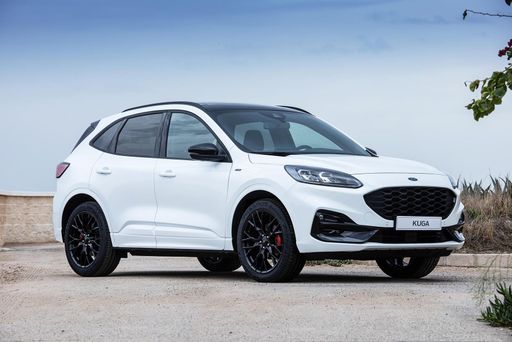 @ kuga.fordpresskits.com
@ kuga.fordpresskits.com
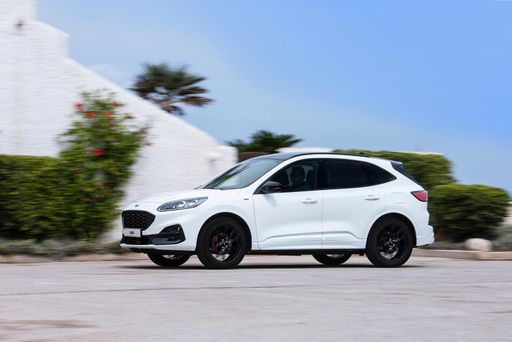 @ kuga.fordpresskits.com
@ kuga.fordpresskits.com
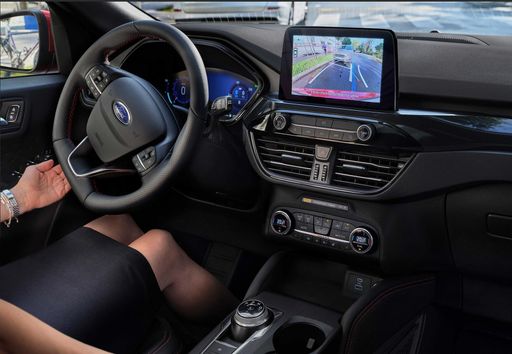 @ kuga.fordpresskits.com
@ kuga.fordpresskits.com
Hyundai IONIQ 5
The Hyundai IONIQ 5 showcases a bold and futuristic design that captures attention with its striking facade and sharp lines. This electric vehicle offers an impressive blend of performance and efficiency, making it a compelling choice for environmentally conscious drivers. Inside, the spacious and tech-forward interior provides a comfortable and engaging driving experience for both driver and passengers.
details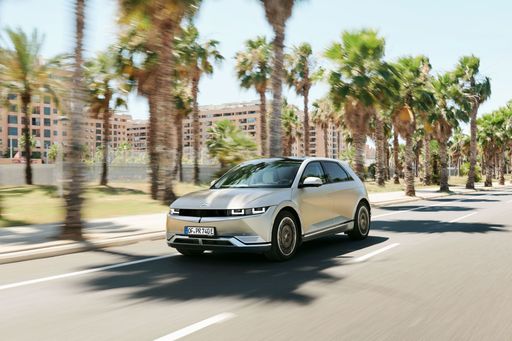 @ hyundai.news
@ hyundai.news
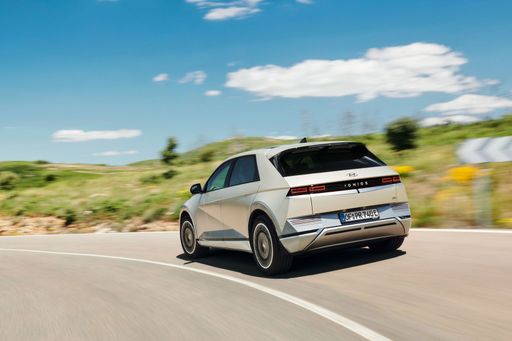 @ hyundai.news
@ hyundai.news
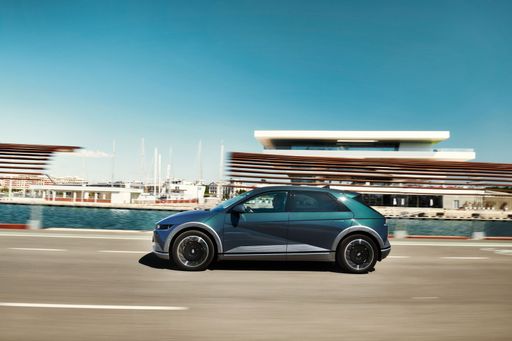 @ hyundai.news
@ hyundai.news
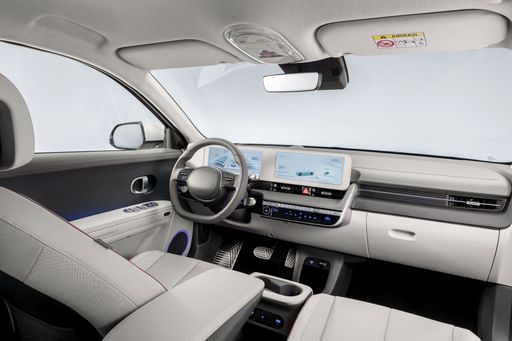 @ hyundai.news
@ hyundai.news
 @ hyundai.news
@ hyundai.news
Ford Kuga vs Hyundai IONIQ 5: Battle of Modern SUV Ingenuity
As the automotive industry continues to evolve, SUVs have emerged as a favorite choice for many. Among the notable players in this segment are the Ford Kuga and the Hyundai IONIQ 5. Each brings unique attributes and innovations to the table, appealing to diverse tastes and requirements. Let's delve into these two vehicles and explore what makes them stand out in the market.
Engine and Performance
The Ford Kuga offers a diverse range of powertrains, accommodating both traditional petrol and hybrid enthusiasts. With engine capacities ranging from 1.5L to 2.5L, the Kuga can generate between 150 to 243 horsepower, depending on the variant. It provides flexibility with transmission choices, including both manual and automatic options. Acceleration from 0 to 100 km/h varies between 7.3 and 9.5 seconds, showcasing its responsive performance. Additionally, the Kuga provides an electric-only range of up to 69 kilometers in its plug-in hybrid variant.
On the other hand, the Hyundai IONIQ 5 is strictly electric, designed for the eco-conscious driver. With a horsepower range of 170 to a remarkable 609, the IONIQ 5 impresses with its electrifying presence. Its 0 to 100 km/h acceleration time hits a swift 3.5 seconds in its highest performance model, making it one of the quickest in its category. The IONIQ 5 also boasts substantial electric range capabilities, with distances between 440 to 570 kilometers on a full charge.
Design and Dimensions
The Ford Kuga exudes a robust and contemporary SUV appeal with dimensions that ensure cabin spaciousness. The length of the Kuga ranges from 4604 to 4645 mm, complementing its width of 1882 mm and height of up to 1681 mm. It offers practicality with a trunk capacity of 412 liters, ideal for family and adventurous outings.
Conversely, the Hyundai IONIQ 5 features a futuristic design with sleek lines, highlighting its electric heritage. Slightly larger than the Kuga, it stretches between 4655 mm and 4715 mm in length and varies in width, reaching up to 1940 mm. Despite its lower height of around 1605 mm, the IONIQ 5 provides generous trunk storage ranging from 480 to 520 liters, catering to its eco-modern consumers who value space.
Efficiency and Environmental Impact
Efficiency is key across both models, albeit achieved via different technologies. The Ford Kuga, depending on the engine choice, offers fuel consumption rates of as low as 0.9 liters per 100 km in its plug-in hybrid version, a remarkable feat for a petrol-based car. Its CO2 efficiency classes range from B to E, depending on the specific model.
The Hyundai IONIQ 5 takes the lead in eco-friendliness. With its all-electric engine, it produces zero emissions, categorizing it under the CO2 efficiency class A. Efficiency varies with a consumption range of 15.6 kWh to 21.2 kWh per 100 km, catering to both economy and performance enthusiasts.
Conclusion
The choice between the Ford Kuga and the Hyundai IONIQ 5 hinges on the driver's priorities. If you favor a versatile, hybrid-friendly approach that blends tradition with modern ecologic adaptations, the Ford Kuga stands out. However, if you’re inclined towards a pure electric experience with groundbreaking performance and zero emissions, the Hyundai IONIQ 5 is an appealing choice. Both of these remarkable SUVs embody the current trend towards innovation and sustainability, meeting the varied demands of today's automotive market.

|

|
|
|
|
Costs and Consumption |
|
|---|---|
|
Price
34200 - 45000 £
|
Price
37600 - 64200 £
|
|
Consumption L/100km
0.9 - 6.8 L
|
Consumption L/100km
-
|
|
Consumption kWh/100km
-
|
Consumption kWh/100km
15.6 - 21.2 kWh
|
|
Electric Range
69 km
|
Electric Range
440 - 570 km
|
|
Battery Capacity
1.1 - 14.4 kWh
|
Battery Capacity
63 - 84 kWh
|
|
co2
20 - 154 g/km
|
co2
0 g/km
|
|
Fuel tank capacity
42 - 54 L
|
Fuel tank capacity
-
|
Dimensions and Body |
|
|---|---|
|
Body Type
SUV
|
Body Type
SUV
|
|
Seats
5
|
Seats
5
|
|
Doors
5
|
Doors
5
|
|
Curb weight
1526 - 1859 kg
|
Curb weight
1955 - 2275 kg
|
|
Trunk capacity
412 L
|
Trunk capacity
480 - 520 L
|
|
Length
4604 - 4645 mm
|
Length
4655 - 4715 mm
|
|
Width
1882 mm
|
Width
1890 - 1940 mm
|
|
Height
1673 - 1681 mm
|
Height
1585 - 1605 mm
|
|
Payload
541 - 550 kg
|
Payload
385 - 530 kg
|
Engine and Performance |
|
|---|---|
|
Engine Type
Petrol, Full Hybrid, Plugin Hybrid
|
Engine Type
Electric
|
|
Transmission
Manuel, Automatic
|
Transmission
Automatic
|
|
Transmission Detail
Manual Gearbox, Automatic Gearbox
|
Transmission Detail
-
|
|
Drive Type
Front-Wheel Drive, All-Wheel Drive
|
Drive Type
Rear-Wheel Drive, All-Wheel Drive
|
|
Power HP
150 - 243 HP
|
Power HP
170 - 609 HP
|
|
Acceleration 0-100km/h
7.3 - 9.9 s
|
Acceleration 0-100km/h
3.5 - 8.5 s
|
|
Max Speed
195 - 200 km/h
|
Max Speed
185 - 260 km/h
|
|
Torque
240 Nm
|
Torque
350 - 740 Nm
|
|
Number of Cylinders
3 - 4
|
Number of Cylinders
-
|
|
Power kW
111 - 178 kW
|
Power kW
125 - 448 kW
|
|
Engine capacity
1496 - 2488 cm3
|
Engine capacity
-
|
General |
|
|---|---|
|
Model Year
2024
|
Model Year
2024
|
|
CO2 Efficiency Class
E, D, B
|
CO2 Efficiency Class
A
|
|
Brand
Ford
|
Brand
Hyundai
|
Ford Kuga
Discovering the Ford Kuga: An SUV for the Modern Age
The Ford Kuga has established itself as a versatile and reliable choice in the competitive SUV market. Combining sleek design with innovative technology, the Kuga offers a range of options to suit different driving preferences and needs. Let’s delve into the various technical details and pioneering features that make this vehicle stand out.
Design and Construction
The Ford Kuga embodies a contemporary design ethos, with dimensions that accommodate both functionality and style. Measuring between 4604 and 4645 mm in length, the Kuga is designed to offer ample interior space while maintaining a compact exterior profile. This is complemented by a width of 1882 to 1883 mm and a height ranging from 1650 to 1681 mm, ensuring a comfortable and commanding drive on the road.
Innovative Powertrains
With a diverse array of engine configurations, the Kuga caters to both traditional and eco-conscious drivers. The range includes 1.5-litre EcoBoost petrol engines, 2.0-litre EcoBlue diesel options, as well as an innovative 2.5-litre full hybrid and plug-in hybrid variants. The hybrid models, particularly the plug-in hybrid, offer impressive efficiency with a consumption as low as 0.9 L/100 km and an electric range of up to 69 km.
Performance and Efficiency
The Kuga delivers a robust performance with power outputs ranging from 120 PS to 243 PS, ensuring there is a model to match your driving style. The vehicle accelerates from 0-100 km/h in as little as 7.3 seconds, depending on the chosen powertrain. Notably, the plug-in hybrid versions allow for considerable fuel savings, making the Kuga a cost-effective option for long-term use.
Advanced Technology and Features
Ford has integrated the latest technology into the Kuga, enhancing both comfort and safety. The vehicle features multiple driving modes tailored to different terrains, advanced driver-assistance systems, and a user-friendly infotainment system that keeps all controls within easy reach. The intelligent all-wheel-drive system available on certain models provides enhanced grip and stability in challenging conditions.
Interior Comfort and Practicality
Inside the Kuga, you'll find a spacious cabin with seating for five, designed with both comfort and utility in mind. The boot space ranges from 405 to 435 litres, allowing for an impressive amount of luggage capacity. High-quality materials and smart design choices throughout the cabin ensure a premium experience, further enhanced by options like Vignale trims for those seeking added luxury.
A Sustainable Choice
With its focus on efficiency and reduced emissions, the Ford Kuga aligns with the growing demand for environmentally responsible vehicles. The CO2 emissions range from 20 to 155 g/km, placing many models in favourable efficiency classes, thus contributing to a more sustainable future.
Conclusion
The Ford Kuga stands out in the SUV segment by offering a perfect blend of performance, technology, and sustainability. Its versatility makes it an ideal choice for diverse lifestyles, from urban adventures to rural explorations. With its innovative features and design, the Kuga is a testament to Ford’s commitment to delivering high-quality vehicles suited to today's discerning drivers.
Hyundai IONIQ 5
Introducing the Hyundai IONIQ 5: A New Era in Electric Mobility
The Hyundai IONIQ 5 is a revolutionary addition to the electric car market, blending futurist aesthetics with ingenious technological features. As part of Hyundai's all-electric lineup, the IONIQ 5 exudes a refreshing approach to sustainable motoring, offering a blend of power, efficiency, and innovation that is set to transform everyday driving.
A Futuristic Design
The IONIQ 5 sets new standards in automotive design with its distinctive silhouette. Its clamshell bonnet and pixelated LED light design form a unique visual signature, evoking a sense of modernity and advancement. Built on Hyundai's Electric-Global Modular Platform (E-GMP), this SUV heralds a new direction for electric vehicles, serving both form and function with a flat floor that maximises interior space.
Performance and Efficiency
The Hyundai IONIQ 5 offers a variety of powertrains to cater to different driving preferences. Depending on the model, power output ranges from 170 PS to a staggering 609 PS, with corresponding torque between 350 Nm and 740 Nm. These configurations enable a brisk acceleration capability, reaching 0-100 km/h in as little as 3.5 seconds.
The car’s battery options of 63 kWh and 84 kWh provide flexibility between range and performance. The efficiency of the IONIQ 5 is admirable, with a consumption ranging from 15.6 to 21.2 kWh/100km, ensuring the capability to travel up to 570 km on a single charge.
Innovative Technology
The IONIQ 5 isn't just about efficient propulsion; it's laden with cutting-edge technology that enhances the driving experience. The vehicle includes an ultra-fast charging capability, able to reclaim 80% of the battery life within just 18 minutes. This is complemented by Vehicle-to-Load (V2L) technology, which turns the IONIQ 5 into a power source to charge devices or even other electric vehicles.
Comfort and Convenience
Inside, the IONIQ 5 continues to impress with a spacious and flexible cabin that maximises comfort and utility. Its minimalist dashboard, dual 12.3-inch screens for infotainment and digital instrument cluster, and extensive use of eco-friendly materials contribute to a serene driving environment.
Safety Meets Innovation
Hyundai has equipped the IONIQ 5 with an array of advanced driver assistance systems. These include features such as Smart Cruise Control, Highway Driving Assist, and Remote Smart Parking Assist, ensuring that safety is paramount without sacrificing convenience.
The Future of Sustainable Driving
With a CO2 efficiency class of A and zero emissions, the Hyundai IONIQ 5 signifies a shift towards more sustainable driving practices. Its blend of technology, performance, and aesthetic appeal positions it as a pivotal player in the electric vehicle market, paving the way for a cleaner, greener future in automotive design.
What drivetrain options does the Ford Kuga have?
The Ford Kuga is available as Front-Wheel Drive or All-Wheel Drive.
The prices and data displayed are estimates based on German list prices and may vary by country. This information is not legally binding.
